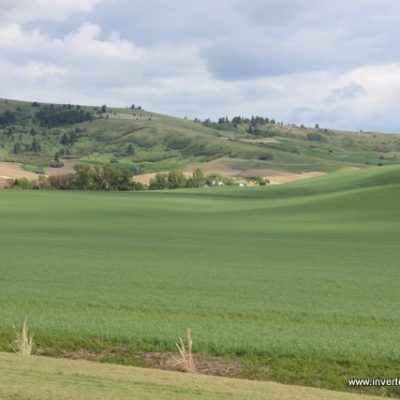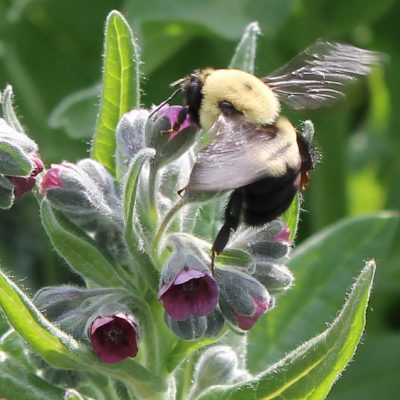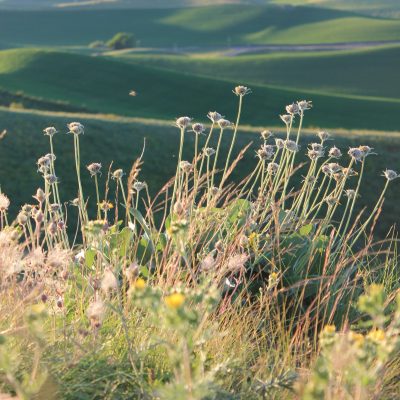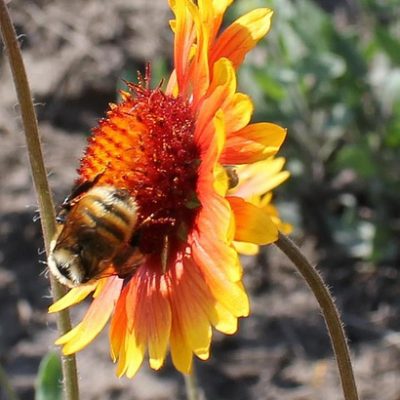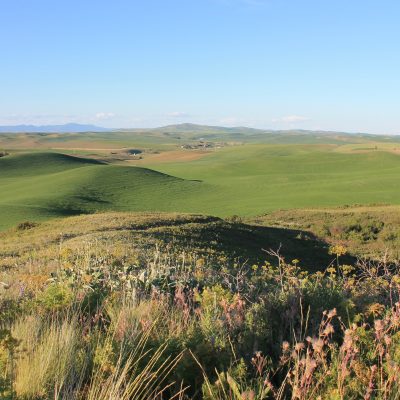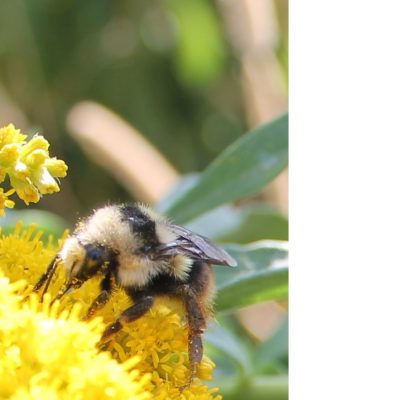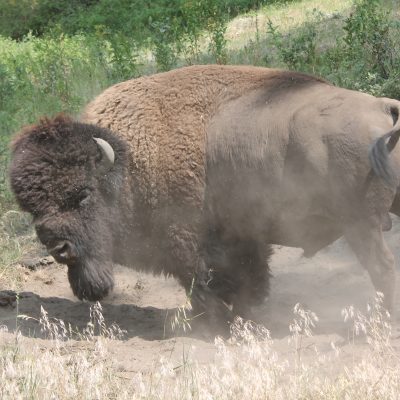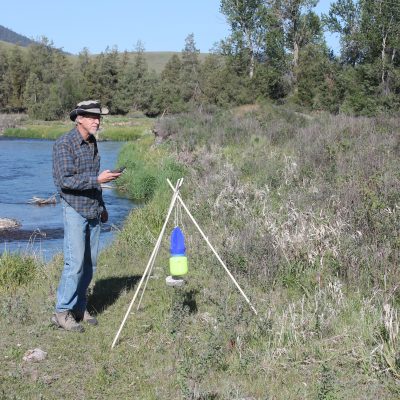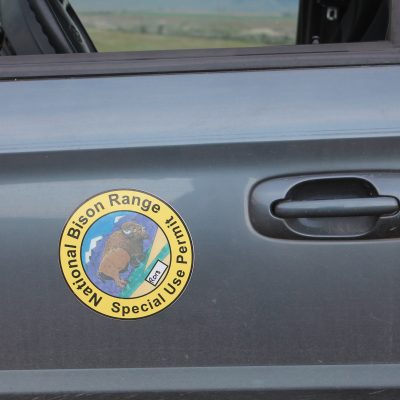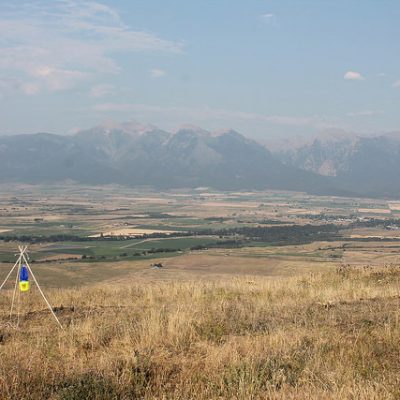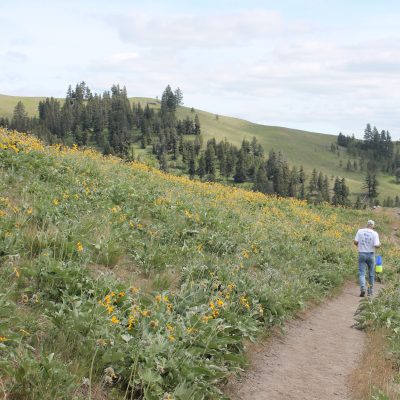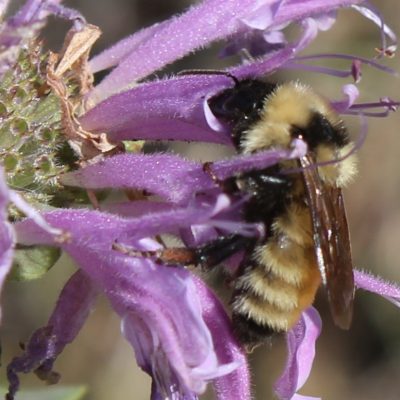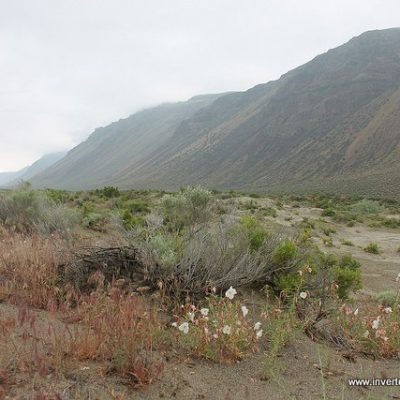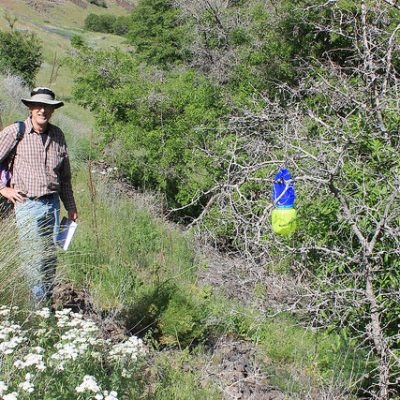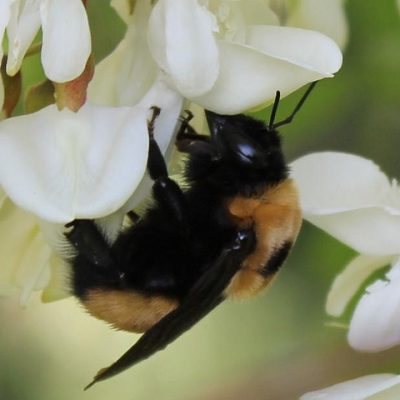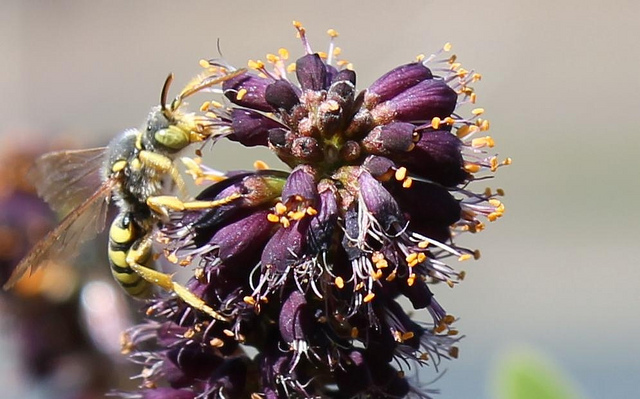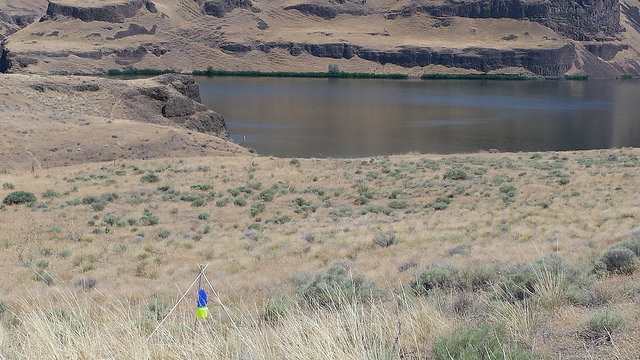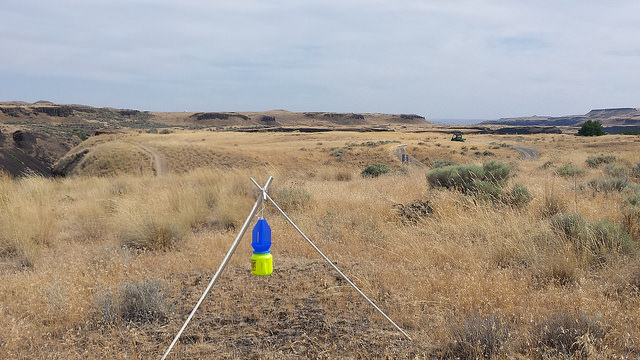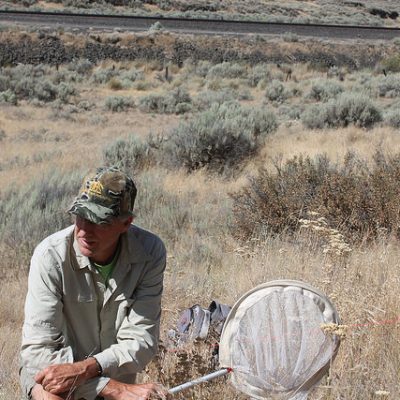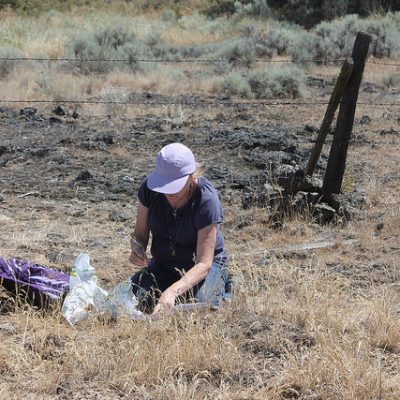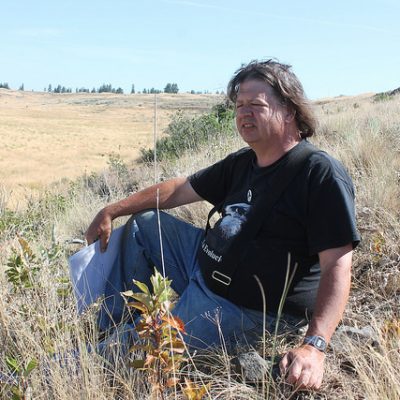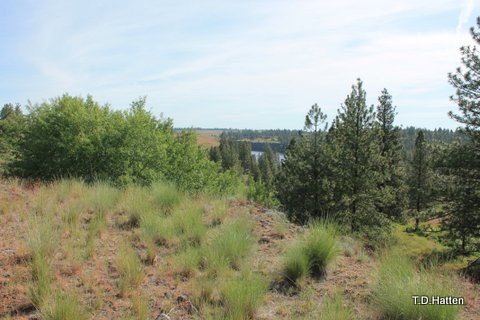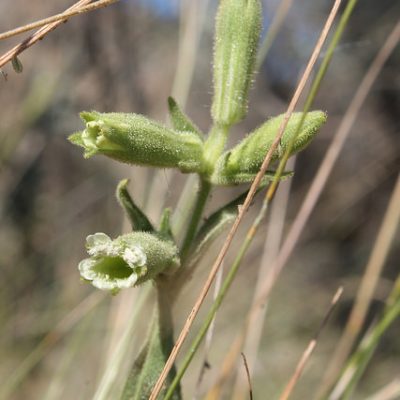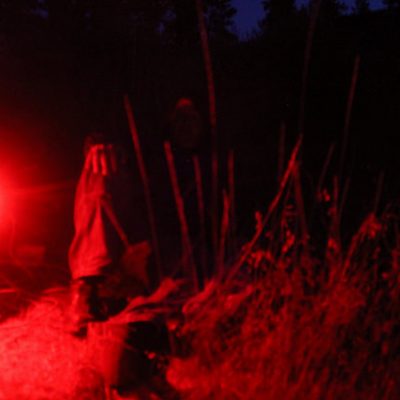Pollinator Studies
Native bees of Palouse Prairie
Invertebrate Ecology’s Tim Hatten is working with a team of researchers from the University of Idaho, USDA-Agricultural Research Service and Washington State Department of Agriculture to survey and compare native bee communities found within and among remnants of Palouse Prairie. The Palouse Prairie is a critically-endangered ecosystem with less than 1.0% of the original prairie remaining (http://palouseprairie.org/). However, remnant patches of Palouse Prairie are remarkably diverse, providing habitat for rare plant species (e.g. Spalding’s catchfly, Jessica’s aster, Palouse thistle, Palouse milkvetch, Palouse goldenweed, etc.), amphibians, reptiles, birds, mammals and many invertebrate species.
In Phase I of this project, Tim Hatten is working with researchers to develop information on identity, abundance, richness and community structure of native bees in five prairie remnants. Thus far approximately 8,000 bee specimens comprised of 18 genera, five families and circa 120 species have been identified. Of the Apidae, approximately 750 are bumble bees comprised of 10 species. A publication on these bumble bees can be linked to on the Publications Page (Hatten et al. 2013). An additional publication on the non-bumble bee species from these prairie remnants will be published soon. In Phase II of the project, IE will work with partners to identify information on specific plant-pollinator interactions in the prairie.
Study of bumble bees on roadside habitats of British Columbia and the Yukon Territories
Invertebrate Ecology’s Tim Hatten collaborated with the USDA, Logan Bee Pollinator Lab to to survey bumble bees in roadside habitats along major roads of Alberta, British Columbia and Yukon Territories. Fourteen bumble bees were detected and their relative abundance patterns reported on. An exciting finding was the detection of two rare bumble bees: The western bumble bee (Bombus occidentalis) and the yellowbanded bumble bee (Bombus terricola).
The populations of both these species have experienced dramatic and troubling declines in the western and eastern regions of North America during the last two decades, respectively, so finding them at these more northern latitudes was exciting and provides important opportunities for modeling purposes. See the Publications page for a link to a publication on the study.
Native bees of the National Bison Range in western Montana
Invertebrate Ecology has a research permit to sample native bees on the US Fish and Wildlife Service’s National Bison Range (NBR) of western Montana. Established in 1908, the NBR was created to provide a home for the American Bison. It is close to 30-mi2, and contains some of the largest and most pristine patches of Valley and Foothills bunch grass prairie remaining in the United States.
The diversity of flowering plants in this bunch grass prairie is very high, and despite the importance of such habitat for pollinators (and vice versa) they remain relatively unstudied on the refuge. Two years of data from approximately 50 sites across a range of elevations and aspects have not been collected, and analyses of species and community patterns are underway.
Surveying and modeling native bee communities of the Columbia Plateau
Invertebrate Ecology is working with partners to survey and model native bee pollinator communities of the Columbia Plateau, Canyon Grasslands, and Foothill and Valley grasslands of the Pacific Northwest. In 2014 and 2015, Tim Hatten and Invertebrate Ecology technicians (and sometimes with accompanying agency personnel) sampled approximately 350 sites within the area, some of them revisited multiple times, to begin describing the bee fauna of the Plateau. Sites were located on County, State, and Federal lands, including: Multiple Bureau of Land Management Habitat Management Areas, multiple Army Corps of Engineers Habitat
Management Unit Areas, multiple locations in the National Park Service’s Nez Perce National Historic Park, the United States Fish and Wildlife Service’s Columbia National Wildlife Refuge, Wawawai County Park and Palouse Falls State Park. Tim Hatten has a permit to sample the bee on lands of all the organization listed above. Additional details can be provided upon request. Data from this large study is already being used to develop species lists for participating organizations, conduct site and habitat comparisons, and to develop predictive land cover and climate models.
Study on bee pollinators of an endangered plant species (Silene spaldingii) in the Channeled Scablands of eastern Washinton
Spalding’s catchfly (Silene spaldingii) is listed as a state (Washington) and federally threatened species, and also as a Bureau o Land Management sensitive species. It is an herbaceous perennial, growing from 2-6 dm tall, and is found primarily in open native grasslands of the Inland Pacific Northwest. The majority of its habitat has been lost over the last two centuries due to habitat conversion, fragmentation, and deterioration. For example, 99% of the Palouse grasslands of northwest Idaho and southeast WA have been lost, while 47% of this habitat has been lost in the Channeled Scablands of Eastern WA, with obvious implications for the survival of S. spaldingii. Extant populations are small, fragmented and scattered throughout the historic range of the species (southern B.C., eastern WA, northeast OR, ID and western MT). Consequently, in 2001 the species was listed as federally threatened by the U.S. Fish and Wildlife Service (USFWS).
Recent studies suggest that two bumble bee species are the primary pollinators of Spalding’s catchfly. These studies were conducted in Montana and Oregon, however, and virtually nothing is know of bee pollinators of the Channeled Scablands region of eastern Washington State. In 2015, Invertebrate Ecology received a grant from the USFWS to investigate pollinators of catchfly within this region. Hence, we monitored pollinator visitation within 17 plots and characterized the flora within them as well. Detailed information on the flora will help us to conduct analyses on plant-pollinator and landscape-level relationships.





